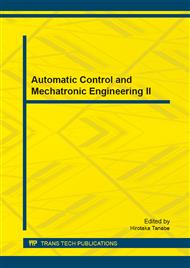p.68
p.74
p.81
p.89
p.95
p.101
p.109
p.113
p.117
Twin Elevator Group Optimization Dispatching Based on Genetic Algorithm
Abstract:
For the characteristics of a new elevator twin elevator with multiple objectives and uncertainty of group control system ,this work proposed a method of twin elevator group optimization dispatching based on genetic algorithm (GA). On the basis of the analysis of structure characteristics of twin elevator, by means of putting twin elevator running rules into the multi-objective control strategy, the method constructed objective function for twin elevator group; the method utilized GA for the simulation of twin elevator group optimization dispatching, and compared it with the minimum waiting time algorithm. Research results show that the method is able to adapt to the running characteristics of twin elevator, and different traffic flow pattern. Compared with the ones of the minimum waiting time algorithm, average waiting time, long waiting time incidence and the numbers of elevator stops of genetic algorithm are all significantly reduced. Consequently, this method has a strong ability to adapt, and provides a theoretical basis for engineering application of twin elevator group control system.
Info:
Periodical:
Pages:
95-100
Citation:
Online since:
September 2013
Authors:
Keywords:
Price:
Сopyright:
© 2013 Trans Tech Publications Ltd. All Rights Reserved
Share:
Citation:


